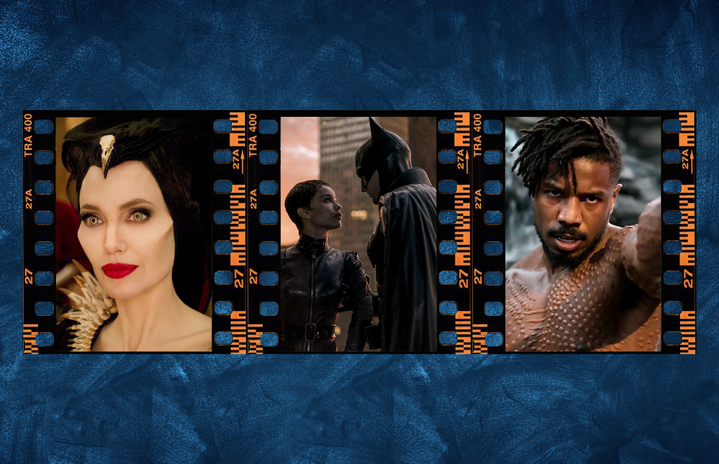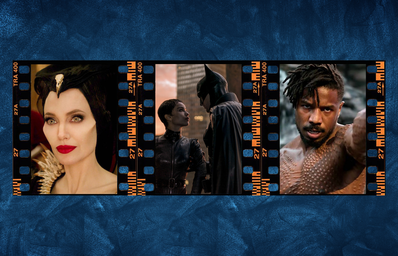Superheroes and their heroic deeds have taken over today’s pop culture landscape, from the characters of Marvel’s Avengers to DC’s Justice League. The most recent hero to return to the silver screen is Robert Pattinson’s version of the elusive billionaire Bruce Wayne, aka Batman. But this time around, he’s not the only big name in Gotham.
Characters like Catwoman, the Joker, and Bane have become commonly associated with the reclusive billionaire and are loved just as much, if not more, than their heroic counterpart. The one to receive perhaps the most attention in 2022 has been Zoë Kravitz in The Batman, where she plays Selina Kyle, aka Catwoman. Catwoman toes the line of heroism and villainy, sparking debates of whether or not Catwoman is an anti-hero or a villain.
From the introduction of the character, Catwoman has been portrayed as being on the wrong side of the law. Her past as a thief clearly puts her on the villain side. But over the years, she’s slowly transitioned from purely being a villain to an anti-hero to Batman’s greatest love.
Where people used to accept a villain’s actions at face value, Gen Z has started to examine the motivations behind so-called villainous behavior.
For ages, heroes were seen as saints who could do no wrong, and the villains were always, always, bad. Even in movies like Batman v Superman: Dawn of Justice, where the two traditional heroes see each other as a threat to humanity and are pitted against each other, they eventually come together to defeat the true villain Lex Luthor. These movies only reinforce the idea that even if their actions are questioned, ultimately the heroes come out on the side of good and the villains on the side of bad.
But the world isn’t the same as it used to be, and neither is the way Gen Z thinks. Living through a years-long pandemic, worrying about climate change, and advocating for causes like trans rights and Black lives, Gen Z has grown up with a lot of outside stressors. And just as their way of thinking changes, so do the kinds of questions they ask — and that extends to the world of fiction. Where people used to accept a villain’s actions at face value, Gen Z in particular has started to examine the motivations behind so-called villainous behavior.
Modern retellings of classic fairytales is one type of media where this change is most prominent. From their inception, characters like Maleficent and Cruella De Vil have been classically villainous. But in the past decade, both characters have been transformed and reimagined as protagonists in their own films where their deeds have been humanized with their own tragic backstories. These retellings tell the story from the side of those considered to be villains, but by providing their perspective, their actions of cursing a princess and kidnapping puppies are validated and absolved through their own actions. So, are they truly good or bad? And why do people love them if they really are evil?
With all the struggles that Gen Z faces, from social injustices to mental health issues, it’s easier to resonate with characters who are just as flawed and troubled as them.
Naveen, 20 and a senior at Purdue University, tells Her Campus about why he thinks Gen Z is starting to gravitate towards the stories of villains. “Our generation has come to a point where they believe the world has more dark than light,” Naveen says. “So, they think that movies with cool villains are more realistic than movies with cool heroes.”
Heroes like Superman are depicted as being perfect, otherworldly specimens who can do no wrong. In contrast to that, people are multidimensional and imperfect, just like the villains in these stories that we read or see on the screen. And with all the struggles that Gen Z faces, from social injustices to mental health issues, it’s easier to resonate with characters who are just as flawed and troubled as them.
“Villain origin stories show that evil is not intrinsic, it is indeed fashioned,” Chaye McIntosh, a psychologist and clinical director at ChoicePoint Health, tells Her Campus. “Sometimes the struggles and darkness of the villains speak volumes to this generation as they are going through hard times.”
As they acknowledge and work through their own issues, Gen Z can’t help but consider the mental health and thought processes of villains.
Years of living in stressful times and dealing with traumatic events like school shootings and a global pandemic, Gen Z has learnt to break down the barriers and the stigma around mental health. According to the American Psychological Association, Gen Z is the most likely to report when their mental health is poor and are the most likely to seek help for their mental health issues. So, as they acknowledge and work through their own issues, Gen Z can’t help but consider the mental health and thought processes of villains. They want to know what causes these characters to act in different, more violent ways.
“As a mental health professional, I can tell that everyone does have a story of how they turned out to be like we see them now. And this generation knows that,” McIntosh says. “They always wonder what exactly happened to Cruella that made [her] this way. All frustrated and full of vengeance.”
Gen Z wants to believe that nobody is truly evil. According to McIntosh, Gen Z wants to give people the benefit of the doubt and wants to know what causes the villains to behave the way they do. While people may be driven to do bad things, everybody has a story and a past that makes them who they are, and knowing more about the pasts of villains helps to humanize them. Even though not every villain’s actions are condoned — like in the case of Euphoria‘s Nate and Cal Jacobs, who each got their own flashback scenes, for example — there’s an undeniable intrigue in recent years that has shifted more focus toward how villains became so evil.
An influx of stories that follow the “good triumphs evil” formula doesn’t work for a generation that is shedding light on the injustices around them.
When Black Panther came out in 2018, Michael B. Jordan’s portrayal of Eric Killmonger sparked conversation about his goal to use Wakanda’s resources to help liberate his people around the world. Social and situational factors might have influenced him to take drastic, violent measures but his actions were still validated because people understood the motivations behind them. His passion and ideology reached people all over the world and he was even deemed “the true hero we need” by some viewers.
At a time when people are fighting for social change, from the BLM movement to women’s rights, characters like Killmonger and Maleficent are very much in tune to what Gen Z needs. Killmonger started a conversation about black liberation. Maleficent’s story is one that women can resonate with. She was drugged and abused by someone she trusted. In the era of Time’s Up and #MeToo, when women are coming forward with their own stories of assault, Maleficent shows that people can stand up for themselves. She is a part of a large group of survivors and she gives them hope that abusers can be punished for their actions.
An influx of stories that follow the “good triumphs evil” formula doesn’t work for a generation that is shedding light on the injustices around them. Characters like Catwoman show that one can be both the hero and villain of their own story. And in this day and age where people are speaking out and acknowledging their own struggles, be it sexual harassment, mental health issues, or the fight for racial liberation, it’s these imperfect characters that they find solace in.


